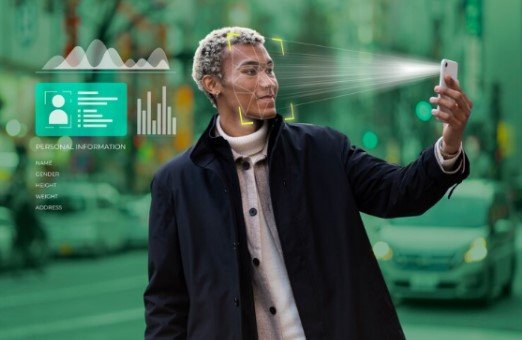/ Globe PR Wire /

Have you ever wondered how your phone camera knows to focus on a face? Or how self-driving cars recognize pedestrians and stop signs in real time? It’s all thanks to a fascinating technology called AI object recognition.
Whether you’re a tech enthusiast or just curious about the systems that power modern tools, this post will break down the basics of AI object recognition in a way that’s simple, clear, and easy to grasp. Let’s dive in.
What Is AI Object Recognition?
AI object recognition is a branch of computer vision that allows machines to identify and classify objects within images or videos. Simply put, it helps computers “see” the world and understand what they’re looking at.
Think of it like this: you show a photo to a human, and they can instantly point out a dog, a car, or a person. Now imagine teaching a computer to do the same—that’s the goal of object recognition. The AI is trained to detect patterns, shapes, and features that help it identify various objects accurately.
How Does AI Object Recognition Work?
While it might sound like magic, the process behind object recognition is a structured sequence of steps involving data, algorithms, and learning techniques.
Here’s a simplified breakdown:
- Image Input: The system receives an image or video frame.
- Feature Extraction: It analyzes pixels, shapes, colors, and textures to find important features.
- Object Detection: The system detects areas of the image where an object might be located.
- Classification: Based on what it has learned, the AI labels the object—e.g., “cat,” “bicycle,” or “traffic light.”
Traditional methods required training AI on thousands of labeled images. But today, modern approaches like using text prompts or agentic object detection allow for recognition with minimal or no custom training at all. That’s a big leap forward.
Why Is AI Object Recognition Important?
From smartphones to smart cities, ai object recognition is powering technologies that are becoming part of our daily lives. Here are just a few key areas where it’s making an impact:
- Autonomous Vehicles: Self-driving cars use it to detect people, traffic signals, and road signs in real time.
- Healthcare: Medical imaging tools use it to identify tumors, anomalies, and organ structures with high accuracy.
- Retail and E-commerce: Visual search and inventory tracking are made smarter with object recognition.
- Security: Surveillance systems use it to spot unusual activity or identify faces in crowds.
And these examples just scratch the surface.
The Rise of Prompt-Based Recognition
Traditionally, object recognition models needed to be trained on massive datasets before they could identify objects correctly. But a new wave of innovation is changing that.
With prompt-based AI object recognition, systems can now identify objects based on natural language descriptions. For example, you could type “a red car” or “a person holding a coffee cup,” and the AI could locate it in a video frame without prior training.
This method—used in platforms like Agentic Object Detection in LandingLens—is faster, more flexible, and much easier to implement across different industries.
Challenges in AI Object Recognition
As promising as it is, ai object recognition still faces a few hurdles:
- Data Bias: If the training data lacks diversity, the AI might not recognize certain objects in real-world scenarios.
- Lighting and Angles: Changes in lighting, camera angles, or object occlusion can reduce accuracy.
- Real-Time Processing: For time-sensitive applications (like autonomous driving), processing speed is crucial.
- Complex Scenes: Cluttered or crowded images can confuse the model, leading to false positives or missed detections.
The good news? Developers are constantly improving these systems to overcome these challenges through better algorithms and more diverse training techniques.
The Future of AI Object Recognition
So, where is this all going?
With advances in machine learning and edge computing, we’re heading toward a future where object recognition will be even faster, more accurate, and more context-aware. It’s likely that in the near future:
- AI systems will understand contextbetter—recognizing not just objects but their relationships (e.g., “a person sitting on a chair”).
- More industries will adopt agentic object detection, allowing custom use cases without custom datasets.
- Edge AIwill allow object recognition to happen on small devices without sending data to the cloud—great for privacy and speed.
Imagine wearable devices that recognize what’s in front of you and give you real-time info, or home assistants that can interpret what’s happening in your living room and respond accordingly. That’s the power of evolving ai object recognition.
Getting Started: Tools and Platforms
If you’re curious and want to try your hand at object recognition, there are platforms that make it surprisingly accessible—even for non-coders.
For instance, LandingLens offers tools that allow users to deploy object detection models without writing complex code or gathering massive datasets. Their Agentic Object Detection feature uses text prompts, which makes it ideal for businesses or researchers who want fast, scalable solutions.
Other beginner-friendly tools include:
- Google’s Teachable Machine
- Roboflow
- YOLO (You Only Look Once)
- TensorFlow Lite
Many of these offer drag-and-drop features and visual training environments, making experimentation easier than ever.
Final Thoughts
In a world that’s quickly becoming smarter and more automated, understanding technologies like ai object recognition gives you a glimpse into what powers modern machines.
We’ve moved beyond just identifying simple shapes—today’s systems can recognize complex objects, scenes, and even interpret language prompts to find what you’re looking for. It’s no longer about training a machine on thousands of examples. Now, it’s about smart, flexible detection that works with minimal effort.
Whether you’re building apps, working in robotics, or just curious about how AI works, knowing the basics of object recognition is a solid step toward understanding the future of intelligent machines.
The post AI Object Recognition: Basics You Should Know appeared first on Insights News Wire.
